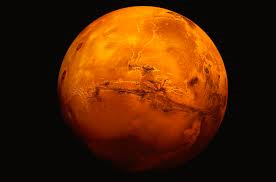We might be wrong about how Mars formed, scientists have said.
The Red Planet may have taken much longer to form, and done so in an unexpectedly violent way, according to new research.
It is hard to know how Mars formed, and how much that was dictated by collisions in the early solar system, because the surface has been wiped of evidence over the billions of year that have come between.
Researchers have previously looked at elements found in meteorites that came down from Mars and concluded that Mars would have grown rapidly after the first 2-4 million years of the Solar System’s existence. But the new study suggests that it would have been smashed with collisions during that earlier history, and the formation might have taken as long as 20 million years.
Some 61,000 meteorites have been found on Earth, and about 200 of them are thought to have come here Mars. Those that have been discovered were probably thrown off Mars during collisions in its more recent history.
Looking through those rocks, scientists found elements such as tungsten and platinum, which tend to cling to iron. Such elements tend to find their way from the mantle towards the edges of the planet and into the core at its centre as the planet forms.
The discovery of those elements in the rock suggests that Mars was hit by what scientists call planetesimals – small objects not big enough to be planets – after its core had been created.
“We knew Mars received elements such as platinum and gold from early, large collisions. To investigate this process, we performed smoothed-particle hydrodynamics impact simulations,” said Dr. Simone Marchi, lead author of the new paper, from the Southwest Research Institute.
The pieces of Mars that came down to Earth probably came from a relatively limited number of places on the Red Planet. Researchers now hope that future Mars missions can pick up pieces of the planet and bring them back down to Earth, giving a better understanding of the makeup of elements in Martian rocks and more detail on how the planet formed.
“To fully understand Mars, we need to understand the role the earliest and most energetic collisions played in its evolution and composition,” Marchi concluded.
the Independent
 Lebanese Ministry of Information
Lebanese Ministry of Information



